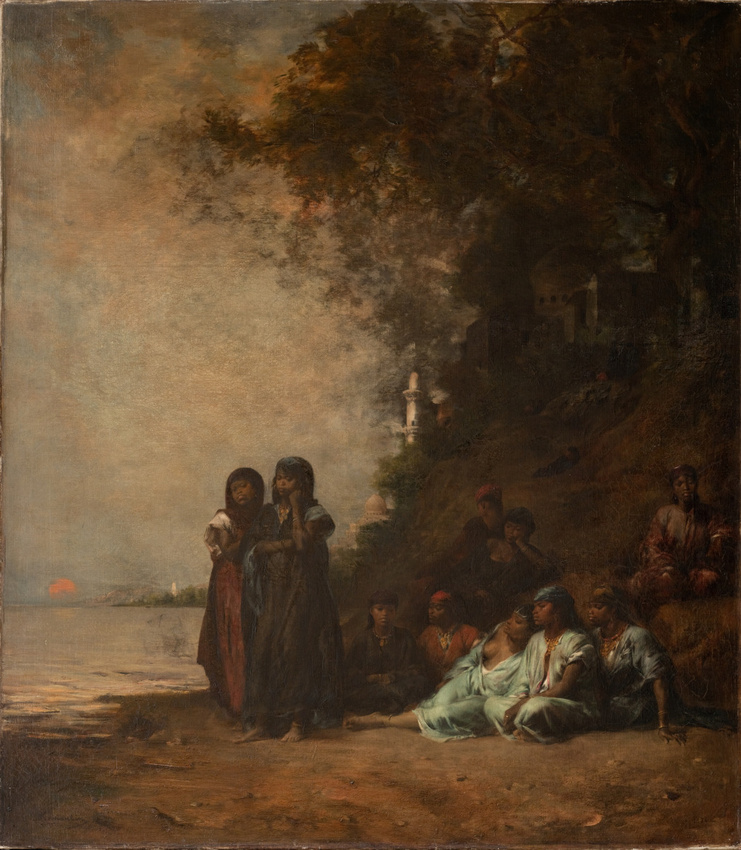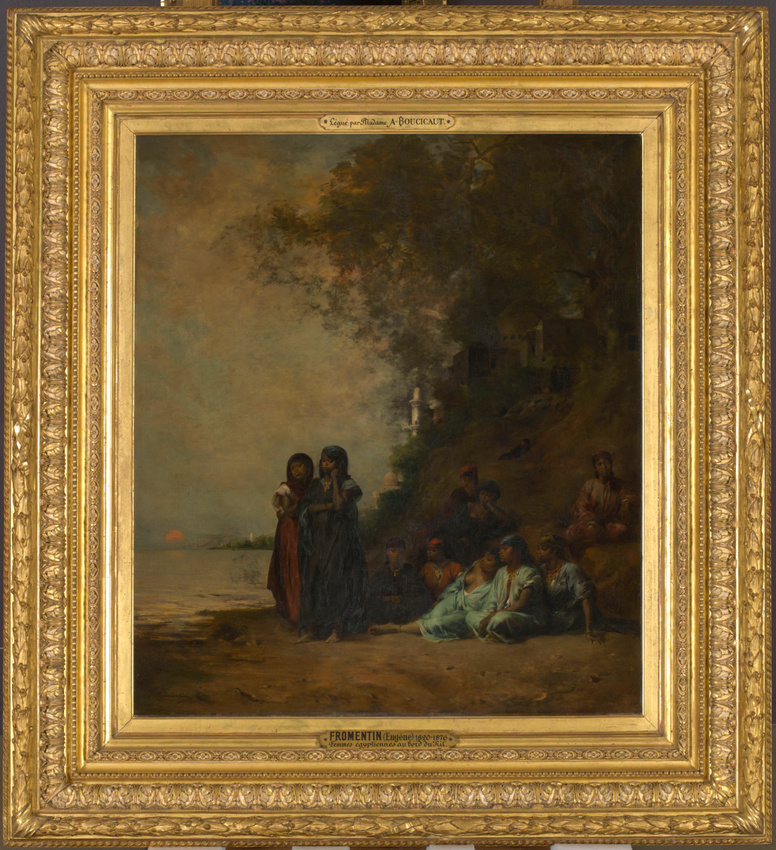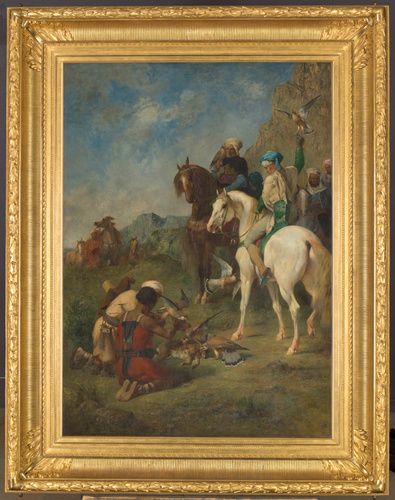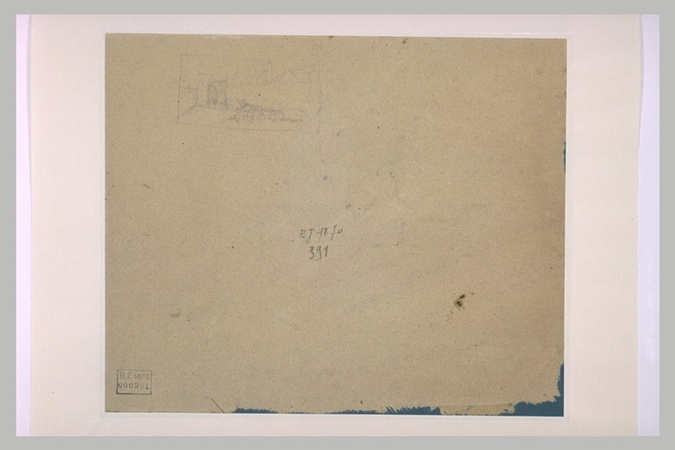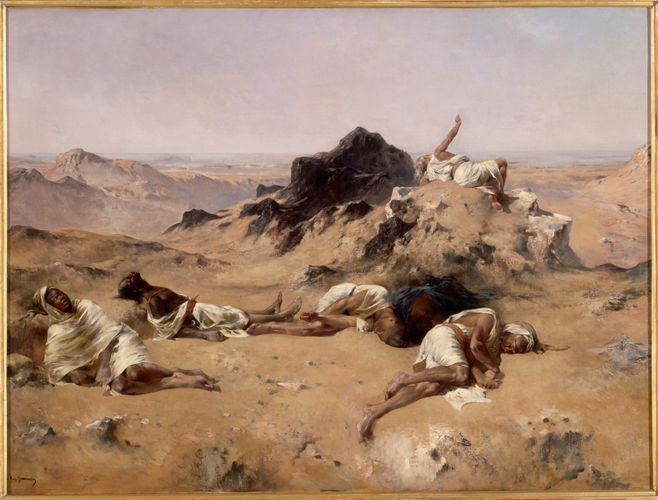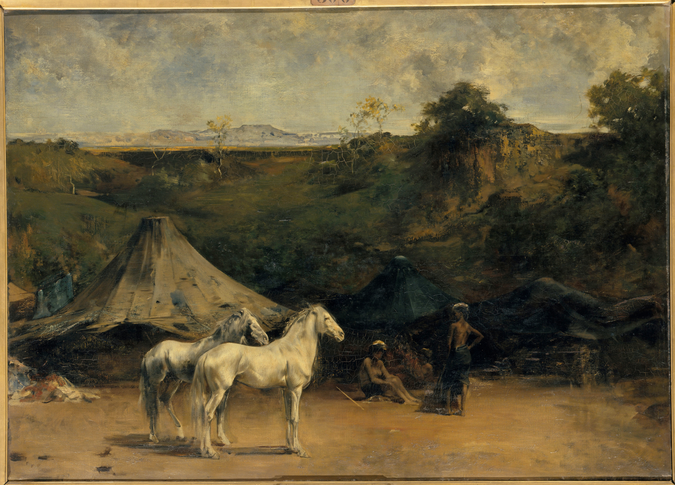Souvenir d'Ezneh, Haute-Egypte
On 17 November 1869, Eugène Fromentin, through the good offices of Napoleon III's private secretary of Charles-Edmond Chojecki, figured among the official guests of the Viceroy of Egypt for the opening of the Suez Canal. He was also one of the sixty favoured passengers who embarked on the steamer Béhara to go up the Nile to Aswan, before the official celebrations.
Fromentin brought back only a few sketches and watercolours from this journey through Egypt. However he took the time to record his impressions of the country in his diary. Published posthumously under the title Carnets de voyage en Egypte with a number of photographs, it served as a memory jogger for the artist when he was back in France. He painted many Egyptian scenes including Reminiscence of Esneh, Upper Egypt, also known as Egyptian Women on the Banks of the Nile. It is this work, along with a view of the Nile, that the artist entered in the last Salon in which he participated, in 1876, the year of his death.
A group of women is shown at the water's edge at sunset. Only the fact that they are black-skinned, and that a minaret and a mosque can be made out behind the trees, suggests an African setting. The scene is divided into two contrasting zones, the river bathed in a warm golden light and the foliage above the women's heads, handled in shades of brown and green.
